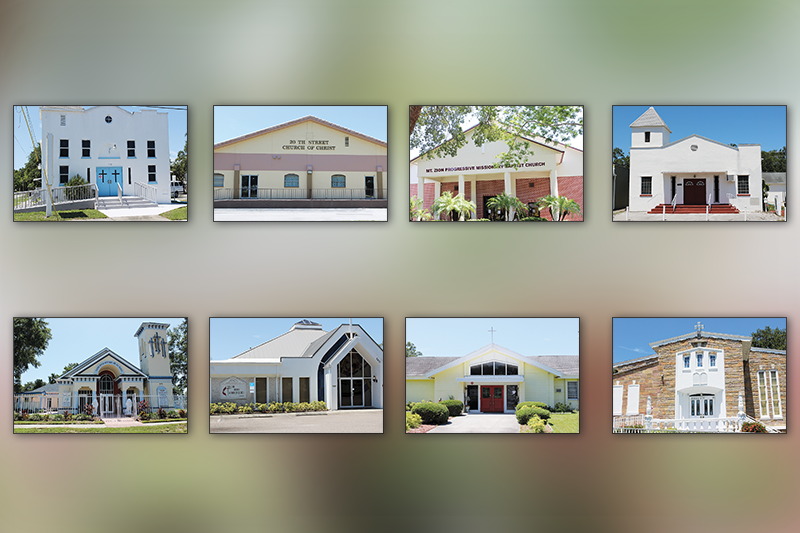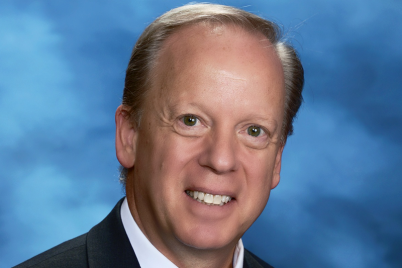Before inviting congregants back, faith leaders should set up a reopening and recovery team at least six to eight weeks before reopening. The team should consist of leaders and lay-leaders within the congregation.
BY FRANK DROUZAS, Staff Writer
ST. PETERSBURG — As communities turn to places of worship for both spiritual counsel and practical guidance during the COVID-19 pandemic, it’s integral, now more than ever, for churches and other faith organizations to feel equipped to lead through the crisis. Everyone is facing some type of struggle, be it navigating trials due to COVID-19, overcoming fear of the unknown, or striving to nourish parishioners while maintaining social distance.
To provide an applicable roadmap on how to deal with the crisis, faith leaders supported by the Foundation for a Healthy St. Petersburg and the Florida Department of Health, Pinellas County, prepared a series of online seminars to help prepare pastors and spiritual leaders to best serve during this tumultuous season.
Rev. Rebecca Burrow, CEO of Building Reconciliation Inclusion Diversity and Gender Equity, LLC, St. John Primitive Baptist Church and Andrea Peaten, community immunizations liaison at the Florida Department of Health Pinellas, shared their perspective and guidelines for reopening places of faith, strategies for mitigating Coronavirus within congregations and resources for developing a disaster preparedness plan.
Speaking to community faith leaders in a webinar, Burrow asked them to consider the average age of their congregations and their race and percentage of members with existing health conditions as a guiding factor in reopening. Data and financial resources for their recovery should also be considered.
“Because we know that people of color have been disproportionately affected by COVID-19, it’s important that you keep these things in mind when you are considering reopening the doors to the church,” Burrow said.
She urged leaders to consider the financial and psychological impact the virus has already had on their parishioners, and what resources could be put in place before reopening. Burrow stressed that it’s essential to realize the potential for a COVID-19 outbreak within the congregation before opening.
“Think about how vulnerable your congregation and your parishioners will be to a COVID-19 outbreak within the congregation,” she said.
Allowing for necessary expenses is key, as Burrow said, such as additional cleaning supplies or multiple services. She urged churches to assemble a reopening and recovery team of leaders and lay leaders six to eight weeks before reopening, to deal with logistics and provide the best insight to the functioning of the church.
Ushers and security members, for example, maybe the ones to ask congregants to put masks on or sanitize their hands before entering the church.
“Make sure you are asking different people from various capacities,” Burrow said. “You’ll need your trustees; you’ll need your financial folks, you’ll need your assistant ministers and leadership to be a part of that reopening team. Think about who are the people that have touchpoints with the congregation and will be able to assist with that reopening process. Their input is vital.”
As an alternative to fully reopening, a church can consider doing a partial reopening, or opening in phases. This may apply to churches that have daycare facilities or host outside meetings such as A.A. and N.A. She explained that leaders should develop a plan for physical and social distancing and adjust the duration and operating times of the service.
To avoid a full house, faith leaders might ask congregants to attend on only certain Sundays, while the rest worship virtually from their homes that week. Some churches have been issuing a limited number of tickets or even holding multiple services on a given Sunday.
“But you cannot have all your members come in at the same time,” Burrow pointed out.
Communicating with the congregants and keeping them informed of the reopening steps helps alleviate their anxiety. This can be done with videos, e-mails, Facebook posts, or even newsletters for those who don’t have access to Wi-Fi.
She urged churches to order cleaning supplies and sanitizers well ahead of time, as these items aren’t as readily accessible as before the pandemic. Deep cleanings will be necessary, and it is wise to document these cleanings.
Entry and exit stations with sanitizer and temperature checks are recommended. Though parishioners with a high temperature may not necessarily be carrying the virus, at least the church can remind them that they may be putting others at risk that day.
Water fountains should be closed off, and all door handles should be cleaned regularly and often. Microphones, keyboards, and organs should be sanitized after every use or every hand-off. Personal headphone microphones may be an alternate option. Also, remove Bibles, hymnals, pens, information cards, etc., from the backs of chairs/pews.
Faith leaders must communicate clearly to the congregants what the new mitigating guidelines are — such as wearing masks, for example — and make sure they adhere to them. They might position offering trays at entrances to avoid passing them around or encourage parishioners to give online.
“Do not relax your mitigation guidelines until the data says we’re clear,” Burrow said. “And that will probably be when there’s a vaccine or cure.”
Peaten underscored that everyone will have to adjust to living in the time of COVID-19. Reopening church preschools, for example, should be done with extreme care and limited class size. Mission work and outreach efforts are currently being discouraged by health organizations due to their close contact natures.
“If you’re going to do community outreach, which is local, find ways to do it where you can do the social distancing,” she said.
Peaten explained that congregants over 65, those with underlying health conditions, pregnant women, and newborns are more susceptible to the virus and should be encouraged to stay home. She also placed great importance on cleaning.
“The church needs to be cleaned any time there is someone in the building,” she said, “whether it is a group of two or a group of 200.”
Resources:
floridahealthcovid19.gov/community-events/
gabaptist.org/reopening-your-church-building/
COVID-19 testing:
baycare.org/coronavirus/covid-19-testing-centers
floridahealthcovid19.gov/
https://www.chcpinellas.org/









